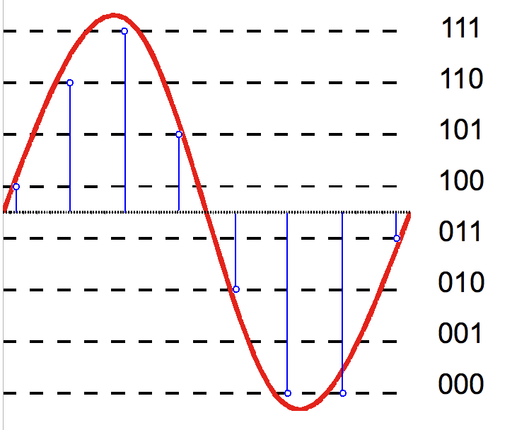LabSat 3 Wideband - I/Q Signals and Quantisation
I/Q Signals
Labsat 3 Wideband receives RF signals from various satellite constellations and stores these at very high speed. These stored signals can then be replayed later into a standard GNSS receiver. This receiver then accepts the signal as if it was live, including all velocity, delays and multipath effects.
Each of these RF signals is actually a combination of multiple signals, e.g. the GPS L1 frequency band currently has both the standard civilian signal (known as the C/A code) and an encrypted military signal (the P(y) code) with plans to add a new civilian signal (L1C) and new military signal (M code) in the future.
In order to help separate out all of these signals, they are added to the RF carrier signal in two different ways. Some are added in phase with the carrier signal while some are added 90° out of phase. These two signals are known as the I and Q signals for In-phase and Quadrature phase.
In order to correctly record the full signal, the Labsat will record both of these I and Q signals separately, and when replayed the two signals are mixed back together to correctly reproduce the original full signal.
.gif?revision=1)
Representation of I signal (cosine curve) and Q signal (sine curve)
Quantisation
Quantisation is the process of mapping a large set of input values to a (countable) smaller set. In relation to LabSat 3 Wideband, this is the resolution of the converted analogue to digital signal that is recorded and then replayed. LabSat 3 Wideband has configurable 1, 2 or 3 bit (highest level) quantisation levels and the selection is largely dependent on the number and strength of the signals being received.
Due to the maximum data rate that can be reliably maintained by the internal hard drive, the number of channels available for selection will depend on the required signal resolution and bandwidth. For example, it is possible to record 3 separate RF channels of 56 MHz each using 1 bit quantisation, but if 3 bit quantisation is required at 56 MHz bandwidth, only one RF channel will be available.
While a maximum of 3 bit quantization sounds poor for someone familiar with audio or other radio technologies, when combined with automatic gain control (AGC) it is more than adequate for GPS since all of the incoming signals are at very similar levels.
|
2 bit resolution with four levels of quantisation |
3 bit resolution with eight levels of quantisation |
Recording Setup
The setup checker below enables you to select the correct bandwidth, channels and quantisation settings within LabSat 3 Wideband, as well as giving digital I/O timing resolution and maximum CAN/ RS232 baud rate that will replay reliably information.
The maximum CAN / RS232 baud rate that will replay reliably is:


